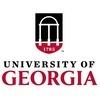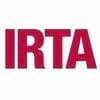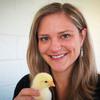Explore all the information on
Poultry welfare
Proper animal welfare involves providing the proper housing, management, nutrition, disease prevention and treatment, responsible care, humane handling and, when necessary, humane euthanasia. These factors allow for the most optimal and humane growing environment. The concept of animal welfare includes three elements: the bird’s normal biological functioning, its emotional state and its ability to express its natural behaviors. Improving animal welfare can be accomplished through offerings like poultry feed enrichment, which can reduce stress, thereby increasing performance, productivity and profitability. Animal welfare is currently a major requirement for intensive poultry production. Beak trimming, stocking density, free access to feed, heat stress, and air pollutants became important issues, which are regulated in several countries. Animal welfare is observed by watching how birds naturally behave and even by looking at mortality stemming from aggressive behaviors.
Background & Objectives There has been immense growth in the global poultry industry that should be maintained to match the current preference of consumers for animal protein. Such growth also calls for a better understanding of factors that could influence production such as litter. Ducks spend their entire rearing period in contact with the litter material provided. It is therefore vital to investigate the effect that the different commercially available bedding materials...
Comments : 0
Recommendations: 0
Water meters are used as a management tool to track daily water usage in poultry houses. Most mechanical water meters used in poultry housing can only measure water flow rates more than 0.25 gals/min which limits reliable measurement of water usage for birds that are less than four days of age. Producers can now accurately measure water usage within minutes of chicks being placed in the house by using ultrasonic water meters. Modern house controllers can collect, store, and graph water...
Comments : 3
Recommendations: 1
by Sam Shafer
Broiler chickens show better growth and reduced liver problems when given brown seaweed extract or meal during times of heat stress
Chickens don’t do well in the heat. In fact, birds experiencing heat stress tend to eat less, grow slower, and even have compromised immune function. Heat stress is also a major cause of mortality for chickens and leads to considerable economic losses each year in the poultry...
Comments : 0
Recommendations: 0
Poultry scientists show that a few hours of darkness a day does not harm broiler chicks
Broiler chicks can be provided between 1 to 4 hours of darkness a day without negative consequences, according to a recent study led by scientists at the USDA Agricultural Research Service and Auburn University.
Their findings, published in The Journal of Applied Poultry Research, address the practice of rearing chicks with constant light during their...
Comments : 0
Recommendations: 1
When placing chicks it is crucial to their future performance and health to make sure the litter they are placed upon has been thoroughly warmed. Though the air in a house can be heated relatively quickly, insuring the litter throughout a brooding area is heated to between 85°F and 95°F can take from 12 and 36 hours depending on the type of heating system, level of air movement, house tightness, litter moisture level, etc. Since the chicks are in constant contact with the litter,...
Comments : 0
Recommendations: 0
Garret Ashabranner (University of Georgia) explains the different issues that can be identified by using water meters, in this interview during IPPE 2023 in Atlanta, USA....
Comments : 0
Recommendations: 1
In the summer season, as the temperature increases, poultry suffers from the condition called heat stress, also known as summer stress. This is a condition of imbalance between heat generation and heat loss in the body. This condition not only brings poor performance in birds but is also...
Comments : 2
Recommendations: 4
Oxidative stress in poultry Poultry is one of the fastest growing segments of animal industry and has a substantial contribution to food security and nutrition. Birds are exposed to a multitude of stressors of environmental,...
Comments : 1
Recommendations: 0
APRIL 4 @ 8:00 AM - APRIL 6 @ 11:00 AM EDT
$450.00 – $550.00
This intensive training program has been specifically designed for those who want to learn more about poultry house environmental management during hot weather. The workshop consists of lectures...
Comments : 1
Recommendations: 1
Stefan Eils, Director Sustainability Development at Evonik Animal Nutrition, speaks about the relevance of asustainable food chain production
...
Comments : 0
Recommendations: 5
1. Introduction Deoxynivalenol (DON) is a secondary toxic metabolite mainly produced by Fusarium species that belongs to the trichothecenes family. DON frequently occurs in cereals, including wheat, maize, barley, rye and oats [1]. A 10-year survey from 2008 to 2017 of the global mycotoxin occurrence in feed revealed that DON was the most prevalent of mycotoxins and was detected in 64% of 74,821 samples collected from 100 countries [2]. Therefore, DON is considered to be...
Comments : 0
Recommendations: 2
Daily water consumption has been used as a management tool by poultry producers for decades. Since water consumption is closely correlated to feed consumption, decreases in daily water consumption are often an indicator of reduced feed consumption and/or health issue. With the emergence of ultrasonic water meters bird water usage can now be more accurately monitored on a minute-to-minute basis thus providing the opportunity to view bird drinking/feeding activity over the course of the day...
Comments : 0
Recommendations: 0
Shawna Weimer (University of Arkansas and Poultry Extension Collaborative) talks about the transition to cage-free production and consumer preferences, as well as enrichments and stunning, in this interview during IPPE 2023 in Atlanta, USA....
Comments : 0
Recommendations: 0
Will Strickland (University of Georgia) comments on his research on water consumption and potential issues that can be prevented by monitoring it, in this interview during IPPE 2023 in Atlanta, USA....
Comments : 0
Recommendations: 0
Steve Lerner (CHR. Hansen) explains the effects of probiotics on the well-being of birds, and also comments on welfare and sustainability, in this interview during IPPE 2023 in Atlanta, USA....
Comments : 0
Recommendations: 5
On-farm euthanasia is not a pleasant topic, but when raising poultry, there are often circumstances that require birds to be euthanized, such as illness, injury and disease, because it is not always possible or feasible to treat affected birds. Euthanasia refers to “good death” and is distinct from other terms such...
Comments : 0
Recommendations: 0
As discussed in our previous newsletter, circumstances arise that require poultry to be humanely euthanized. This newsletter provides a brief overview on-farm methods for the euthanasia of small numbers of poultry. Most of these methods are different from methods used at processing and methods used for culling or depopulation during disease...
Comments : 0
Recommendations: 0
What is Stunning? How is it Regulated? Stunning is the process of rendering broilers unconscious or insensible before slaughter and various mechanisms may be used in facilities to achieve insensibility (Humane Slaughter Association, 2015). The methods used depend on the facility's location (on-farm vs. in a...
Comments : 0
Recommendations: 0
During July 18th - 22nd our Research & Development team participated in the 6th Viruses of Microbes conference, which took place in Guimarães, Portugal. Our colleague Agnieszka Ciesielska presented the results of one of...
Comments : 0
Recommendations: 1
INTRODUCTION Water is the primary fluid necessary for human life. About 60% of the human body composition is water and life would not be possible without it (Chaplin, 2001). Not only is water important for the optimal functioning of the human body, but also it is the most important nutrient in the diet of some animals and the development of plants. A significant percentage of the water in the world is used in agriculture practices. In the United States, 80% of the national water...
Comments : 2
Recommendations: 1




.jpg&w=3840&q=75)














.jpg&w=3840&q=75)
.jpg&w=3840&q=75)



.jpg&w=3840&q=75)










